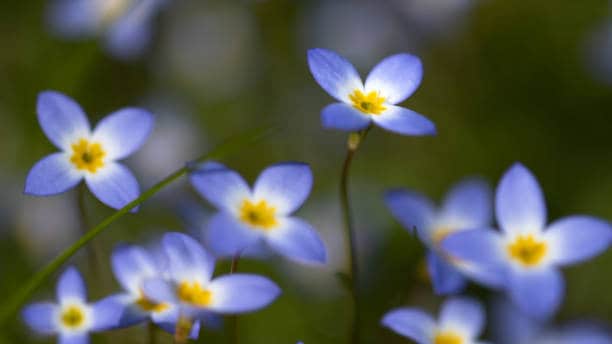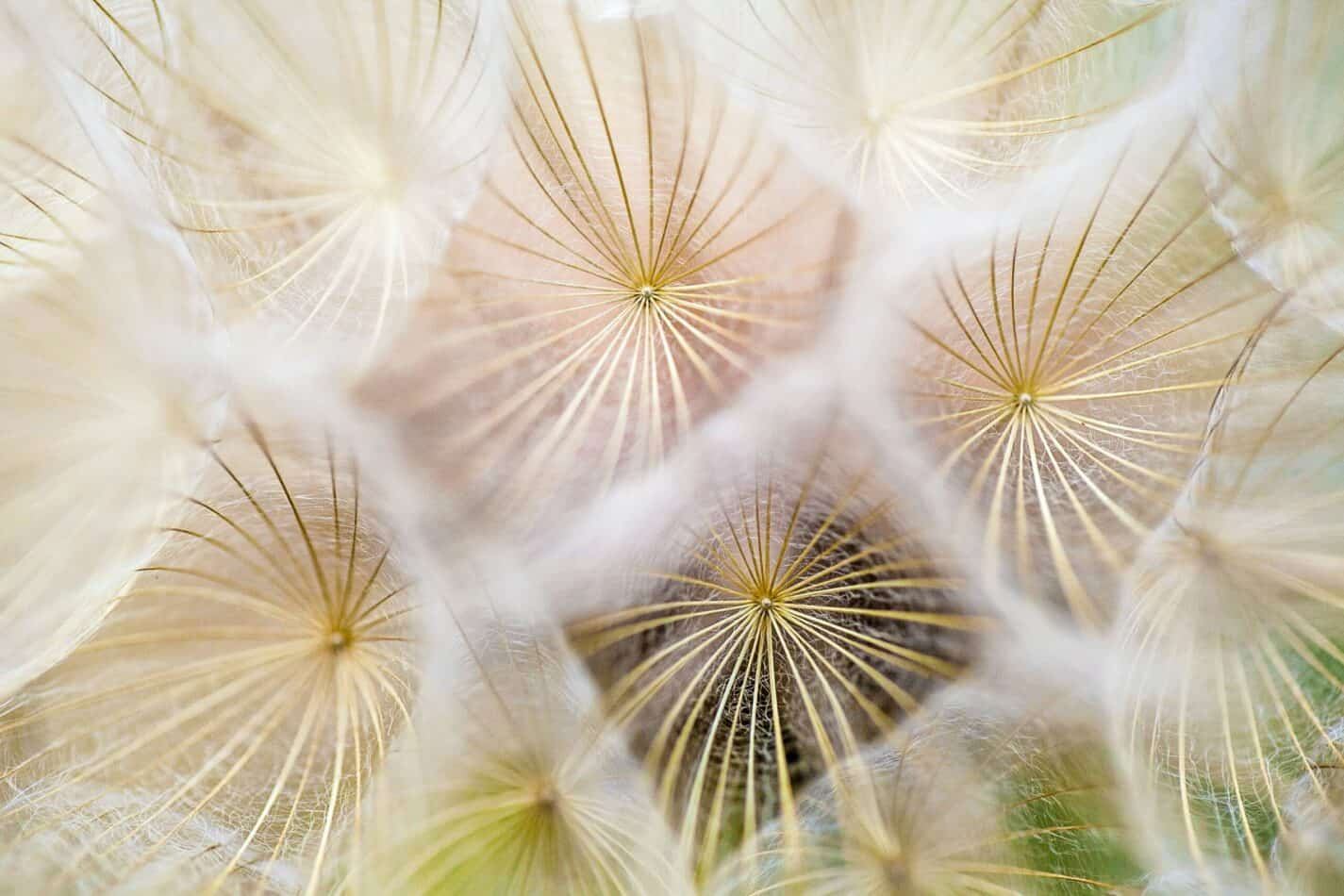Bluet, or Houstonia caerulea, is a flowering perennial plant that stands out for its delicate and compact blooms. The flowers consist of four petals tipped with pale blue color, which gradually changes to white, with a golden yellow center. This wildflower grows in small clumps, usually surrounded by mosses around or at the base of large trees. It needs sandy soil, making it ideal for rock gardens. Its family is Rubiaceae and it is a perennial plant.
How To Plant
To properly grow Bluet, you need to locate them in an area that receives sunlight for at least four to six hours each day. The soil needs to be well-draining, but it also should be regularly watered to encourage the flowers to bloom throughout the entire season. Bluet also require temperatures between 50 and 80 degrees, and prefers slightly higher humidity when possible. Finally, fertilize the soil every few months to further nourish and promote growth.
Meaning and Symbolism
The etymology of the term “Bluet” refers to the small blue flowers of the plant. In some cultures, Bluet symbolizes humility, remembrance and faith. Bluet is also an emblem of happiness, fragility and luck.
History, Mythology, and Religious Significance
The Bluet has considerable historical significance in ancient literature and appears in limited records held by the U.S. National Park Service. There is also evidence of Bluet being used as a medicinal herb in Native American cultures. Additionally, in the religious text known as the “Apocalypse of St. John,” the Bluet is identified as one of the four living creatures that encircled the throne of God.
Flower Varieties and Their Defining Characteristics
The Houstonia caerulea flower comes in several varieties, all of which have different characteristics. The most common type of Bluet is the small wood-nymph, which features four-lobed flowers in shades of blue and white. Then there is the small-flowered Bluet, which have petals that are usually uniformly hued and have less of a yellow center than the wood-nymph variety. Finally, the Winged Bluet has outspread petals while the Crested Bluet has petals that are deeply divided in a serrate fashion.
How To Pot and Repot
When potting or repotting Bluet, it is important to choose the right container which should preferably be made of plastic or wood. Make sure the container you choose has drainage holes at the bottom to allow for water to escape when necessary. When potting Bluet, use a soil mix of one part soil, two parts peat moss, two parts coarse sand, and one part perlite. Make sure to provide enough room for the Bluet to grow, then water and fertilize regularly.
How To Prune
To keep your Bluet plant healthy, it is important to prune the plant periodically. Pruning can be done at any time during the growing season to remove dead or dying foliage or stems. Simply cut away the dead or dying stems down to the base of the plant without pruning into the living stems. Pruning will help the plant remain healthy and promote new growth.
How To Propagate
Houstonia caerulea can be propagated by either root division or seed. To propagate by root division, carefully dig up the parent clump and carefully separate the individual plants. Allow the divisions to dry for about a day, then replant in the desired area. To propagate by seed, sow in containers filled with a moist soil mix in the spring and cover lightly with soil. Seeds should germinate in 14 to 21 days. Once the seedlings are large enough to handle, transplant into individual containers or outdoors.
Common Pests and Diseases
Bluet is generally hardy and not overly prone to diseases, but it can occasionally be affected by rust, root rot, powdery mildew, and leaf spot. Common pests include aphids, slugs, and snails. To prevent diseases and pests, ensure proper drainage and fertilize regularly.
Frequently Asked Questions
Q. How long does it take for Bluet flowers to bloom?
A. The flowers usually bloom within six to eight weeks of planting.
Q. Does Bluet flower continuously?
A. Yes, Bluet flowers continually throughout the year.
Q. What is the best soil for Bluet?
A. Bluet prefers a soil that is light, airy and well-draining. A good soil for Bluet would be a mix of one part soil, two parts peat moss, two parts coarse sand, and one part perlite.
Table Fact Sheet
| Bluet | Houstonia caerulea |
|---|---|
| Family | Rubiaceae |
| Plant Type | Perennial |
| Mature Size | 1 foot tall and wide |
| Sun Exposure | Full sun to partial shade |
| Soil Type | Well-draining, sandy soil |
| Soil pH | 6.6 to 7 |
| Bloom Time | June to October |
| Flower Color | Blue and white |
| Hardiness Zones | 3 to 8 |
| Native Area | Eastern United States |
What we love from Amazon this week
Buy these wonderful flowers directly from Amazon:















